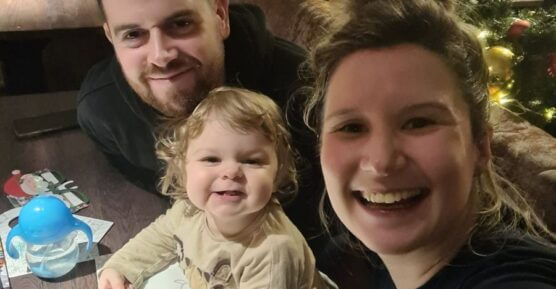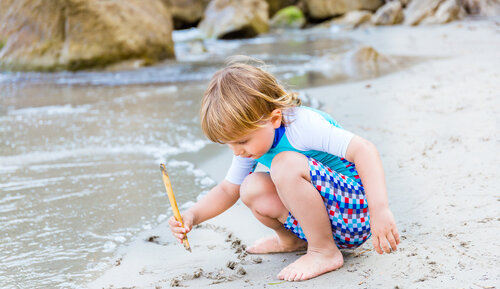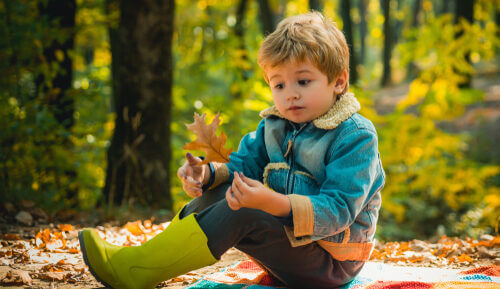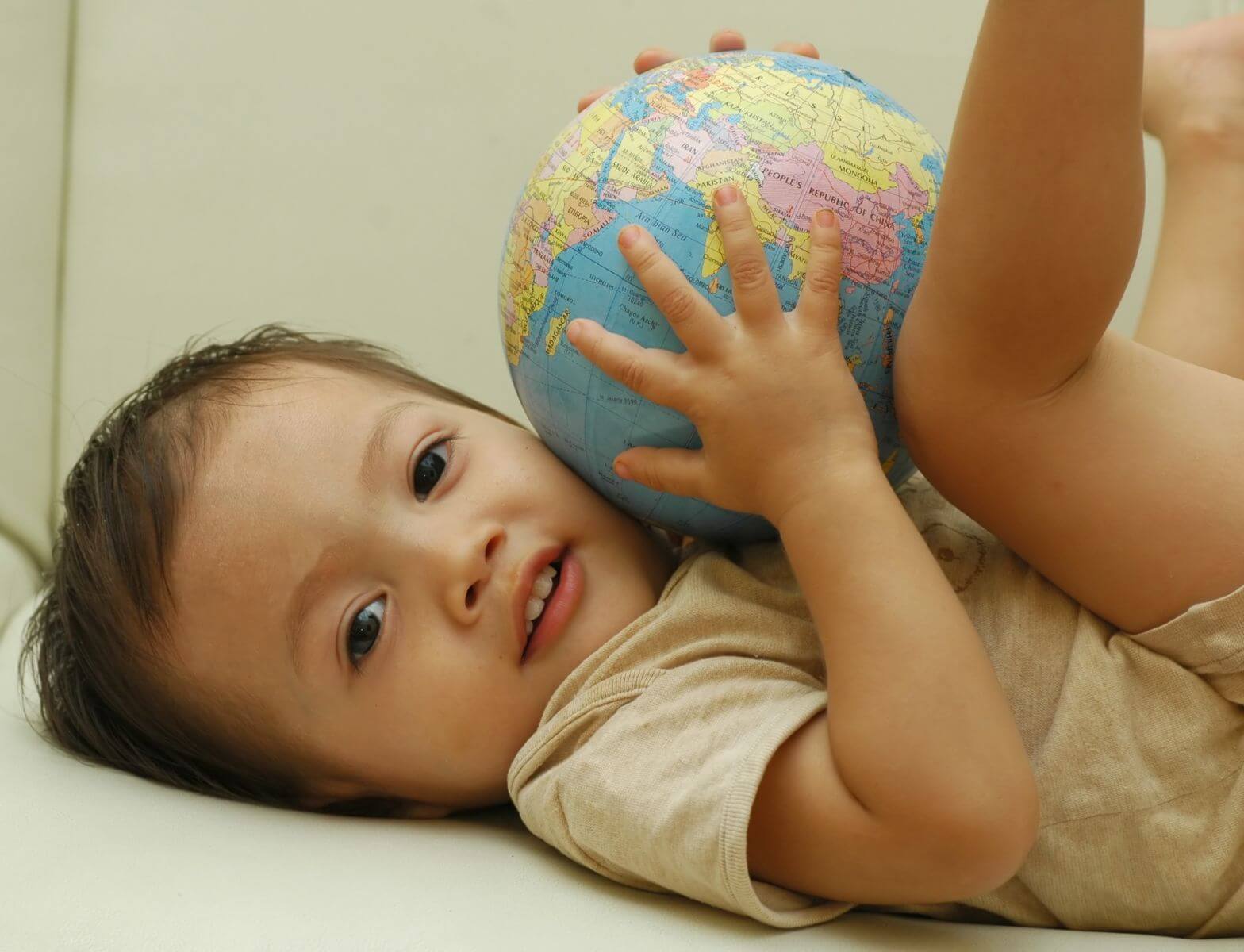
Table of contents
Should you look for an eco-friendly, sustainable nursery for your child? Encouraging children to ‘be green’ and care for the environment can influence the way future generations live on our planet.
Nurseries modelled on social, environmental and financial sustainability are becoming increasingly popular in the UK. This is because parents are keen to educate their children from an early age about having a respect for all life, whether human, animal or plant. But how can you tell how environmentally-friendly an early years setting is? There are many factors to consider when trying to understand how green and sustainable a nursery is.
Is the nursery limiting its impact on the planet’s resources by reducing consumption of energy, water, paper, toxic chemicals, plastic etc? Does it recycle and reuse items? Is it educating children, parents and the wider community about sustainability?
What is sustainability?
Global issues such as climate change, a reduction in bio-diversity and air and plastic pollution are damaging the planet. Wildfires, floods, pollution are just some of the dangers affecting children.
Sustainability is about steps that can be taken by anyone including educators like nurseries to tackle threats to the planet. But sustainability is about more than being planet friendly. Sustainability includes investment in people and communities and financial sustainability.
With thousands of children attending its nurseries across the South of England, Tops Day Nurseries is integrating sustainability into everything it does, It has a goal of becoming carbon neutral by 2025.
“Sustainability includes investment in people as well as the planet and financial sustainability. It is not just about the environment”, says Cheryl Hadland managing director of Tops Day Nurseries.
This can be investment in specific staff groups, for example LGBTQ+ individuals, men (who are a minority amongst staff in the nursery sector), a multi-cultural group and a mental health group. These groups can recommend actions to help make Tops Day Nurseries welcoming and inclusive for all adults as well as children.
As part of its efforts to be carbon-neutral by 2025, Tops Day Nurseries is investing in improving insulation at its nurseries and installing more efficient heating systems.
But Ms Hadland says: “This has to be balanced against the more pressing needs of colleagues currently earning low salaries due to poor government direct funding of early years education and childcare and indirectly with poor support for parents.”
She set up a charity called GECCO (Champions for Change in the Early Years). It promotes sustainability in the early years and give advice to other nurseries wanting to put the environment at the forefront of their decisions and activities on a daily basis.
Why should I care if my child’s nursery is sustainable?
A more sustainable planet is possible if the next generation is educated. Young children can grow up with an understanding of how to look after the planet and can also influence their parents and others.
Nurseries can influence their staff, parents and children when it comes to sustainability. Whatever actions nursery providers take can leave a footprint that impacts on the world children grow up into. That’s why sustainability matters.
Read about why parents Mabel Clarkson and Mike Sinclair chose a sustainable and green nursery for their son Henry
What is B Corp?
In February 2021, Tops Day Nurseries became the first UK day nursery to achieve a B-Corp Certification.
“B-Corp does go further than eco sustainability and is a measure of social impact too which is something that drew me to it” says Cheryl Hadland, MD of Tops Day Nurseries.
“A fundamental difference between B-Corp and the other accreditations is the commitment to change the legal structure of a company to commit to sustainability.”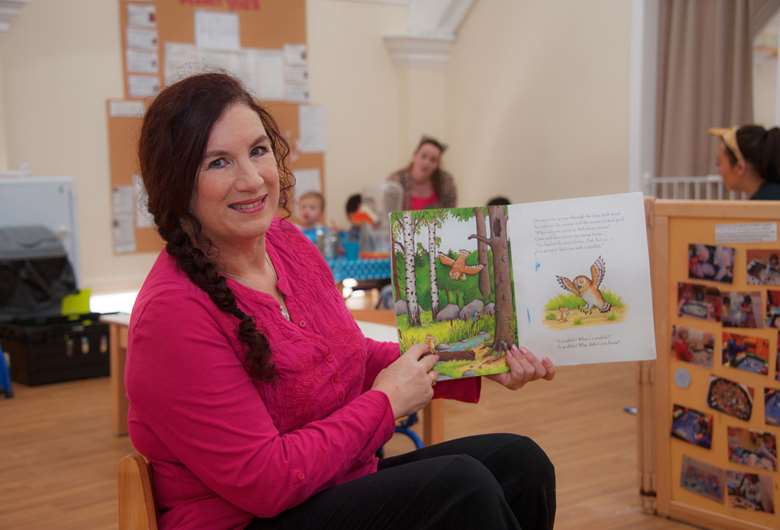
Cheryl Hadland, managing director of Tops Day Nurseries. Credit: Tops Day Nurseries
B-Corp certification is held by thousands of companies around the world.
She says: “I think it’s very easy for companies to claim that they are ‘green’ or ‘eco’ themselves. Submitting your policies and procedures to an independent organisation exposes you to external scrutiny to prove that you are what you say you are.
“We would like to be carbon neutral or even positive as soon as possible.
“It helps to have independent assessment of our sustainability to share with people. It helps people trust us in this world where green wash is so common.”
How do I know if my child’s nursery is sustainable?
There are many things a nursery can do to become more eco-friendly. If sending your child to an eco-friendly nursery is important to you, here are some things you should look out for:
Single-use plastic
Already banned in England, Scotland and Wales, this ban includes single-use plastic plates, trays, bowls, cutlery and some types of polystyrene cups. Plastic straws are already banned. Plastic waste can last in landfills for many years.The ban in England does not include wet wipes.
DIY baby wipes
Some eco-friendly nurseries including Tops Days Nurseries have already ditched wet wipes and make their own DIY baby wipes. Commercially bought wet wipes contain single-use plastic, irritants and chemicals. Around 93 per cent of sewer pipe blockages in the UK are caused by baby wipes. Overflows of sewage into rivers during floods can lead to them going in rivers and the sea. Made of spunlace, the baby wipes will not biodegrade or compost, potentially for hundreds of years.
Reusable nappies
Some early years settings encourage parents to use reusable nappies instead of disposable ‘single use’ nappies. Tops Day Nurseries have a Washable Nappy Programme in all its nurseries. This means children use a reusable nappy while at nursery.
Potty training
The age of children being potty trained has increased over the years. Some children are only potty trained just before starting school. Earlier potty training does away with the need for nappies so some eco-friendly nurseries will prioritise this.
Eco-friendly cleaning products
Green nurseries use eco-friendly cleaning products without chemicals e.g. no phosphates.
No Glitter
Cheryl Hadland made headlines around the world in the Christmas of 2017 for her ban on plastic glitter in all Tops Day nurseries. The nursery boss decided to ban it from all of her nurseries. Once glitter is used, it goes in a bin or down the sink. Glitter makes its way to the ocean but never breaks down. Glitter is a microplastic. In the sea or water it can be there forever unless a sea creature eats it, causing stunted growth and altering behaviour patterns. Microplastic pollution may be impacting people’s hormones, human fertility, immune systems and causing multiple diseases including cancer.
No Plastic toys
Eco-friendly nurseries often get rid of their plastic toys believing they are bad for the environment. Instead, early years settings use natural resources which are environmentally friendly.
Wooden toys
These are biodegradable and can be recycled instead of going to landfill.
Bamboo toothbrushes
Early years settings may have toothbrushing sessions and have bamboo toothbrushes. This is because millions of plastic toothbrushes end up in landfill every day. However, some bamboo toothbrushes have bristles made from boar hair which is undesirable for vegans and Muslims.
Cloth aprons
Staff and children at eco-friendly nurseries can use cloth aprons instead of plastic aprons during messy play activities.
Pets
It is important to teach young children to care for animals and respect them. Some nurseries have their own chickens or a pond where they can watch the tadpoles or a bug hotel.
Vegetable patch
Nurseries with the space outside have a vegetable patch where children can grow their own food. This is a great learning experience. Some nurseries use rainwater for watering plants in their gardens, Some settings use a composter for composting food waste. Nursery food such as vegetables and fruit can be sourced from the veg patch.
Sustainable purchases
Nurseries can work with suppliers to reduce waste packaging and cut down deliveries made in diesel and petrol vehicles.
Local farmers
They can be used to reduce green miles, as well as main suppliers, to provide healthy and sustainable nursery meals focused on plant-based, unprocessed foods. Inclusive menu options at nurseries can include meat-free menu options such as vegan and vegetarian meals. Some nursery menus are prepared with no added salt or sugar.
Recycled and FSC materials for stationary, crafts, toys etc
Buying FSC (Forest Stewardship Council) certified materials, like wooden toys for children to play with in nurseries, can contribute to the responsible management of the world’s forests.
Recycle, reuse and repurpose items
Some staff use charity shops to make second hand purchases instead of buying new, where appropriate. Staff can also buy recycled paper and recycled cotton wool.
Renewable energy
Using renewable energy (such as solar power or wind power) can cut down a nurseries’ reliance on fossil fuels. Nurseries can use smart equipment to monitor their use of resources. Some have installed time and light sensors in nursery buildings and use low energy LED light bulbs. Nurseries may strive to use 100 per cent renewable energy. This means monitoring use of electricity, gas, water, paper and purchasing to detect and eliminate wastage.
Solar panels
This can help nurseries produce their own electricity. They can even send some to the national grid too, helping to reduce the country’s need to use fossil fuels to make energy. Burning fossil fuels contributes to the planet’s global warming crisis.
Solar window films
This can reflect radiant heat back to its source, improving the insulating properties of the glazing system. This leads to marked reductions in energy consumption, costs and carbon emissions. In warmer months, the coatings on solar window films reflect much of the sun’s rays back before entering the building. During winter, window film can in fact reflect more than 90% of the radiant heat back in to the room. This reduces heating costs considerably.
Bike stores
This encourages staff and visitors to cycle to the nursery. Secure bike parking is provided at some nurseries. Such a scheme can include lockers and even showers to encourage people to cycle to work to reduce air pollution and carbon emissions.
Electric car charging points
A few nurseries are investing in electric vehicle charging points to produce zero emissions for staff travelling to and from work in electric vehicles.
Adopting ‘biophilic’ spaces
Spaces such as eco cabins link staff and children to the natural environment. This is done via direct and indirect nature, open space, and light conditions. Increased sunlight can boost serotonin levels and psychological wellbeing and in turn supports early years learning.
Spend time in the natural world
Many nurseries promote outdoor learning about the natural world by making good use of their outdoor spaces. Nursery gardens can encourage diversity (butterflies and bugs), foster respect for living creatures amongst children and be used to teach children to grow food.
Forest Schools
Nurseries are creating forest schools and beach schools to help children learn about the natural world. Children spend some or all of the day outside instead of in the nursery to give them the chance to develop a deeper understanding of the world around them. Once away from technology and screens, children can be more creative. For instance, they can make handprints in mud, build dens, make fires and engage in imaginative play with natural forest items like leaves.
Beach Schools
These schools, like forest schools, also get children outdoors each day as part of an outdoor early years learning curriculum to develop a greater understanding amongst children of the natural world. Children can be creative and develop skills by foraging for beach resources around them like shells, sand and water. Like forest schools, beach school activities develop children’s confidence, imagination, empathy for nature, problem solving and resilience as they are allowed to test their limits.
Green credentials
Some nurseries have accreditation to show their green creditionals such as Soil Association ‘Food for Life’ Early Years Award and Eco-Schools Green Flag status. Other nurseries are linked to Planet Mark. Like B Corp, Planet Mark is a sustainability certification for organisations. Its certification recognises continuous improvement, encourages action to strengthen an organisation’s Environmental, Social and Governance (ESG) strategy.
How can I help my child be more eco-friendly at home?
Many of the steps taken by nurseries can also be adopted by parents with their child at home.
Parents can:
- Use less plastic in the home. Instead you can use reusable nappies, DIY baby wipes and wooden toys.
- Talk to a child about sustainability and what this means at home.
- Grow your own vegetables and fruit with children.
- Source fair-trade and/or organic food.
- Cook more healthy, balanced meals at home.
- Use local suppliers and tradesmen to encourage green miles.
- Encourage wildlife in the garden.
- Limit car use in favour of walking and cycling more with their child.
- Recycle, repurpose and reduce waste.
If sustainability is something that you want your child to experience, look out for it when choosing a nursery.
